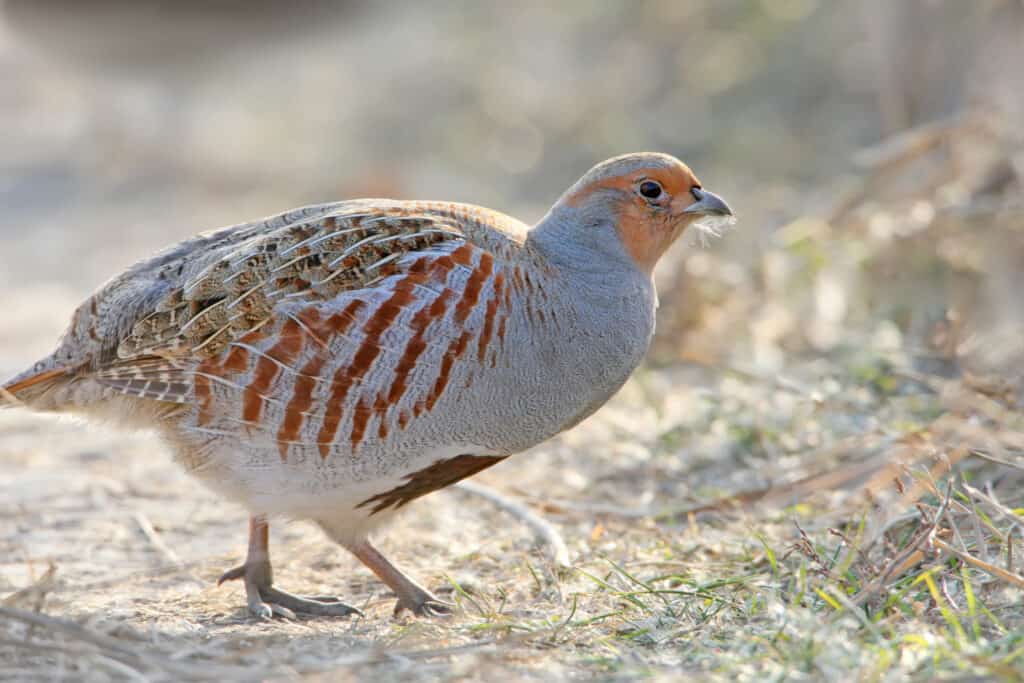Have you ever stopped to wonder, “Is partridge a cheese?” It’s a pretty interesting question, one that might pop into your head when you hear the word. For a good many folks, the term "partridge" brings to mind a particular kind of bird, often seen on menus or perhaps in fields. You know, that gamey, earthy flavor, perhaps a bit leaner than chicken. But what if there’s more to it than just a feathered creature? That, is that a thought that has crossed your mind?
Well, as a matter of fact, the answer is a delightful yes! While the game bird is certainly real and quite tasty, there are indeed actual cheeses that carry the "partridge" name. These aren't just some made-up things; they are genuine artisan creations with their own unique stories and tastes. It’s a bit like discovering a hidden gem in the vast world of dairy delights, don't you think?
This article aims to clear up any confusion, showing you the real partridge cheeses out there. We will explore where these cheeses come from, what makes them special, and how you might enjoy them at your own table. You will learn about their particular characteristics, from how they are made to the distinct flavors they offer. So, prepare to have your cheese horizons broadened just a little.
Table of Contents
- Is Partridge Really a Cheese? Clearing Up the Confusion
- Meet the Partridge Cheeses: Two Distinct Delights
- What Makes These Cheeses Special?
- Enjoying Partridge Cheese: Culinary Pairings and Uses
- Finding Your Own Partridge Cheese
- Frequently Asked Questions About Partridge Cheese
Is Partridge Really a Cheese? Clearing Up the Confusion
When someone mentions "partridge," it’s understandable if your mind goes straight to the bird. For many, that’s the most common association. This particular bird, often hunted for food or sport, has a strong, gamey taste, quite different from chicken. It’s a bit of a culinary staple in some places, appearing on menus with traditional or newly created recipes. But that’s just one side of the story, you know.
The Bird vs. The Cheese: A Common Mix-Up
The name "partridge" itself can cause a bit of a mix-up. People often wonder if it’s a cheese made from partridge meat, or perhaps a cheese that tastes like the bird. To be clear, partridge cheese does not contain any partridge meat. The name simply refers to the cheese itself, much like "cheddar" or "brie." It’s just a name, really.
The bird, with its round body and short tail, offers a distinctive flavor profile. It’s often described as gamey, earthy, and subtly sweet, with a texture that is leaner and firmer than chicken. This strong taste is quite different from what you would expect from a cheese. So, when you hear "partridge cheese," don't expect a poultry flavor. It's just a name, for sure.
The Alan Partridge Connection: A Humorous Detour
Another interesting twist in the "partridge" puzzle comes from the world of entertainment. For many, "Alan Partridge" is a well-known television personality. He’s a character famous for his unique sayings, his life in Norwich, and his often-awkward encounters. He’s been seen eating and drinking various things throughout his different series, and yes, he has even been known to stick cheese in a BBC director's face. So, it's almost a funny coincidence.
This pop culture connection can sometimes lead people to search for "Alan Partridge cheese," perhaps thinking it’s a specific kind of cheese related to his antics. But, as a matter of fact, there isn't a cheese named after the character. The cheese we are talking about today has a completely different origin. It’s a bit of a chuckle, really, how names can get intertwined.
Meet the Partridge Cheeses: Two Distinct Delights
Now that we have cleared up the common misunderstandings, let’s get to the real stars of the show: the actual cheeses that bear the "partridge" name. It might surprise you to learn there isn't just one, but at least two distinct and delicious cheeses to discover. Both are pretty special in their own ways.
Partridge Mountain: A Washed-Rind Wonder
One notable example is "Partridge Mountain" cheese, which comes from Nettle Meadow. This is a cow’s milk cheese, known for its washed rind. What does "washed rind" mean, you ask? Well, it means that during its aging process, the cheese’s rind is washed several times a week in a brine solution. This encourages the growth of particular bacteria, which in turn give the cheese its distinct aroma and flavor. It’s a very hands-on process, really.
Partridge Mountain cheese is infused with juniper and sage, which gives it a unique and aromatic character. These infusions are not just for show; they blend with the cheese’s natural taste, creating a flavor profile that is truly its own. This cheese typically comes in sizes of about 6 to 8 ounces, and it is sold in cases of six, with each piece weighing approximately 10 ounces. It’s a substantial little cheese, so.
The aging process for cheeses like Partridge Mountain happens in special ripening rooms built right into the creamery. This controlled environment is key to developing the cheese’s taste and texture. The brine washing, like the coveted alpage versions of Beaufort and Gruyere, helps create a complex flavor. This care and attention to detail is something you can taste, more or less.
Partridge's Blue: A Mellow, Savory Treat
Then there is "Partridge's Blue Cheese," a completely different kind of delight. This blue cheese originates from the Exmoor Blue Cheese Company, located at Willett Farm. It’s made using unpasteurised Jersey cows' milk, which contributes to its rich and creamy texture. They also use vegetarian rennet, making it a good choice for those who prefer that option. That’s a nice touch, too.
Partridge’s Blue offers a mellow, savory, salty, and sweet taste. It has a grassy, nutty flavor with a long, fruity finish that lingers pleasantly on the palate. This combination of tastes makes it quite a versatile cheese. The distinct blue veining provides that characteristic tang often associated with blue cheeses, but its overall profile remains quite balanced and approachable. It's really rather good, in a way.
What Makes These Cheeses Special?
Both Partridge Mountain and Partridge’s Blue stand out for several reasons. For one thing, their unique flavor profiles are a big draw. Partridge Mountain’s infusion of juniper and sage sets it apart, offering an aromatic experience you won't find just anywhere. Partridge’s Blue, on the other hand, delivers a complex yet mellow blue cheese taste, quite distinct from more intense blues. These are not your everyday cheeses, you know.
The artisan craftsmanship involved in making these cheeses is also a major factor. The cheesemakers, like Andy and Scott who drew inspiration for their recipes from careful thought, put a lot of care into their work. The aging process, with cheeses being washed several times a week in brine solution for Partridge Mountain, shows a dedication to traditional methods. This encourages the development of certain beneficial bacteria, which really contributes to the cheese's character. It’s a very precise art, actually.
The type of milk used also plays a significant role. Partridge Mountain uses cow’s milk, while Partridge’s Blue specifically uses unpasteurised Jersey cows' milk. Jersey milk is known for its higher butterfat content, which can result in a richer, creamier cheese. This attention to ingredients and process means these cheeses offer a quality that is truly special. They are, you know, a cut above.
Enjoying Partridge Cheese: Culinary Pairings and Uses
Once you get your hands on some partridge cheese, you will want to know how to best enjoy it. These cheeses are quite versatile and can be used in a variety of ways, from simple snacks to more involved dishes. They are perfect for spreading on toast or dipping, for example. Just blend them with a good quality extra virgin olive oil, and they become excellent on the palate. That’s a simple trick, too.
For Partridge Mountain, with its juniper and sage notes, consider pairing it with rustic breads, perhaps some cured meats, or even a fruit preserve that complements its herbaceous qualities. A crisp apple or pear slice might also be a good match. A light, fruity white wine or a pale ale could also work well to balance its distinctive flavors. It’s all about finding what tastes good together, really.
Partridge’s Blue, with its mellow, savory, and sweet profile, would shine on a cheese board alongside nuts, dried fruits like figs or apricots, and honey. It could also be crumbled over a salad, perhaps one with your favorite leaf lettuce. It would also be a fantastic addition to a creamy pasta sauce or even a gourmet burger. The possibilities are pretty wide open, so.
Think about how the paste of Montasio has a characteristic eye formation that is homogeneous over the entire cheese. While partridge cheeses might not have that exact appearance, their texture and flavor are equally consistent and delightful. For a special treat, consider incorporating them into recipes that call for a unique, flavorful cheese. Perhaps a savory tart or even a rich gratin. You might even find yourself wanting to try something like a Newfoundland partridgeberry cake, though that uses cream cheese and partridgeberries, not our specific partridge cheese. Still, it shows how cheese and berries can work together. Just make sure the cream cheese and butter are softened for that, it blends better that way and makes for a nice consistency. These partridgeberry crumble squares are a traditional Newfoundland treat, you know.
Finding Your Own Partridge Cheese
So, where can you find these intriguing partridge cheeses? Since they are artisan products, you are most likely to find them at specialty cheese shops, gourmet food stores, or through online retailers that focus on high-quality dairy products. These places often have a whole new selection of unique cheeses every day, so. It is not something you will typically pick up at your regular grocery store, though it might be worth checking local farmer's markets if you have them. It's almost a treasure hunt, in a way.
When looking for Partridge Mountain, remember it often comes in 6 to 8 ounce pieces, sold 6 to a case, with each piece weighing about 10 ounces. Partridge’s Blue is from the Exmoor Blue Cheese Company. Asking your local cheesemonger is often the best approach; they usually know a lot about their stock and can guide you to exactly what you are looking for. They might even have some good pairing suggestions. Learn more about artisan cheeses on our site, and find more unique dairy products on this page.
The availability of artisan cheeses can vary, so if you see it, it might be a good idea to grab it. These cheeses are often produced in smaller batches, which adds to their special appeal. Just like finding a stunning porcelain cheese board entitled "Winter Birds & Wreath Partridge" from Andrea by Sadek, discovering these cheeses can be a real treat. The vibrant reds, yellow pears, and green leaves on such a board would make a beautiful backdrop for your partridge cheese selection. It's really quite a lovely thought, actually.
Frequently Asked Questions About Partridge Cheese
Is partridge a type of cheese?
Yes, "partridge cheese" refers to actual cheeses, not the bird. There are distinct cheeses like "Partridge Mountain" and "Partridge's Blue," each with their own unique characteristics and origins. It’s a common source of confusion, but they are indeed dairy products, you know.
What does partridge cheese taste like?
The taste varies depending on the specific cheese. Partridge Mountain, a washed-rind cow’s milk cheese, is infused with juniper and sage, giving it an aromatic and herbaceous flavor. Partridge's Blue, a blue cheese made from unpasteurised Jersey cow’s milk, has a mellow, savory, salty, and sweet taste with grassy, nutty, and fruity notes. It’s quite varied, actually.
Where does partridge cheese come from?
Partridge Mountain cheese comes from Nettle Meadow, a creamery known for its artisan cheeses. Partridge's Blue cheese is produced by the Exmoor Blue Cheese Company at Willett Farm. These are both specific producers dedicated to crafting unique cheeses. So, they have clear origins, too.



